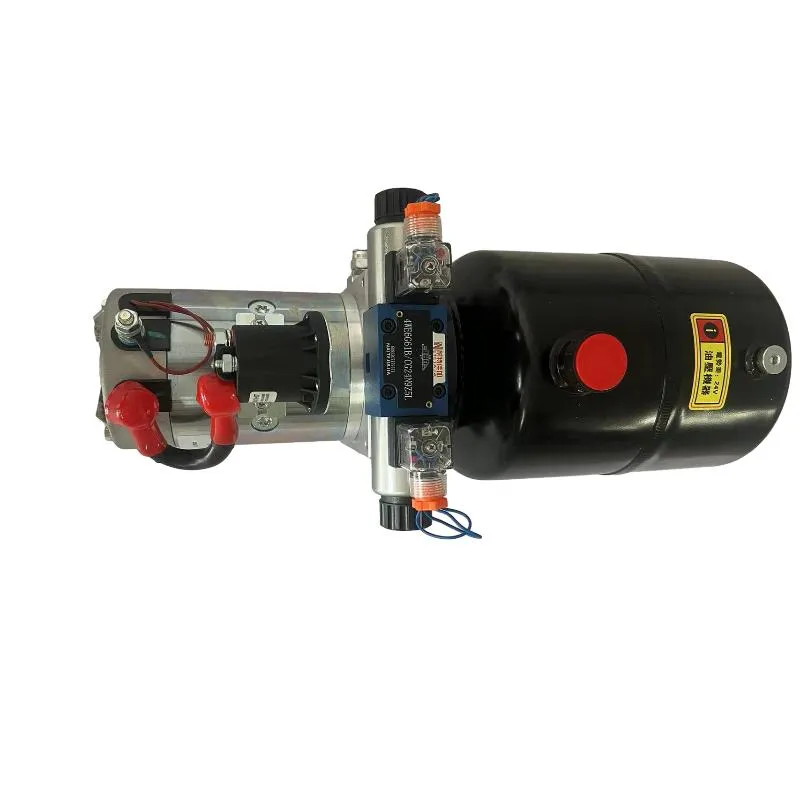Nov . 15, 2024 22:36 Back to list
hydraulic cylinder tube products
Understanding Hydraulic Cylinder Tube Products
Hydraulic systems play an essential role in various industrial applications, providing the necessary force and power to operate machinery efficiently. At the heart of these systems lies the hydraulic cylinder, a crucial component that converts hydraulic energy into mechanical energy. The performance of a hydraulic cylinder is greatly influenced by its design and the materials used, particularly its tubes. This article delves into the significance of hydraulic cylinder tube products, exploring their types, construction, and applications.
Types of Hydraulic Cylinder Tubes
Hydraulic cylinder tubes are typically categorized based on their application and manufacturing process. The most common types include
1. Seamless Steel Tubes These tubes are manufactured without welding, making them strong and reliable. Their lack of seams decreases the risk of failure under pressure, making them ideal for high-pressure applications.
2. Welded Steel Tubes Produced from strips of steel that are rolled and welded, these tubes can be tailored to specific sizes and dimensions. They are often used in applications where seamless tubes are not a necessity, and they provide a cost-effective solution.
3. Chrome-Plated Tubes These tubes undergo a plating process that provides a hard, corrosion-resistant surface. The chrome coating enhances wear resistance, making them suitable for hydraulic cylinders exposed to harsh environments.
4. Honed Tubes Honing is a machining process used to improve the internal surface finish and dimensional accuracy of the tube. Honed tubes are commonly used in hydraulic cylinders, ensuring smooth movement of the piston and extending the overall lifespan of the component.
Construction Materials
hydraulic cylinder tube products

The materials used for hydraulic cylinder tubes are vital for their performance. High-quality steel is the most common choice due to its excellent strength-to-weight ratio, fatigue resistance, and ability to withstand high pressures. Additionally, alloys such as stainless steel can be utilized for applications that require superior corrosion resistance.
In some cases, composite materials are also explored in hydraulic cylinder tube manufacturing. These materials can offer advantages such as reduced weight and increased resistance to corrosion, although they are generally less common in heavy-duty applications.
Importance of Precision and Quality
The effectiveness of hydraulic cylinder tubes is highly dependent on precision manufacturing and strict quality control. Imperfections, such as inconsistent wall thickness or surface irregularities, can lead to cylinder failure, resulting in costly downtime and potential safety hazards. Therefore, employing advanced manufacturing technologies and rigorous inspection processes is crucial for ensuring the reliability of hydraulic tube products.
Applications
Hydraulic cylinder tubes find extensive applications across various industries. In construction, they are pivotal in operating bulldozers, excavators, and cranes, providing the necessary lifting and digging power. In the manufacturing sector, hydraulic systems using these tubes power presses and machine tools, boosting productivity and precision.
The automotive industry also heavily relies on hydraulic tubing for systems such as brake mechanisms and power steering. Additionally, in aerospace, hydraulic cylinders are integral to flight control systems, ensuring safety and reliability in aviation.
Conclusion
Hydraulic cylinder tube products are indispensable components in the field of hydraulics, offering strength, reliability, and versatility. Whether seamless or welded, coated or honed, the choice of tubes directly impacts the efficiency and safety of hydraulic systems. As industries continue to innovate and evolve, the demand for high-quality hydraulic cylinder tubes will undoubtedly remain strong, underscoring the importance of investing in precision-engineered solutions to meet the needs of a dynamic market. Understanding the nuances of these products will enable businesses to make informed decisions, ultimately enhancing their operational capabilities.
-
Fork Lift Power Units - Hebei Shenghan | Efficiency, Reliability
NewsJul.13,2025
-
1.5-Ton Turbocharged Cylinder-Hebei Shenghan|Hydraulic Solution,Energy Efficiency
NewsJul.13,2025
-
Auto Hoist Power Units-Hebei Shenghan|Efficiency&Industrial Lifting
NewsJul.13,2025
-
Double Acting Power Units-Hebei Shenghan|Hydraulic Solutions,Industrial Efficiency
NewsJul.13,2025
-
1.5 Ton Lifting Cylinder 70/82-40-290-535 - High-Performance Hydraulic Solution | Hebei Shenghan
NewsJul.13,2025
-
Fork Lift Power Units - Hebei Shenghan | Efficiency&Reliability
NewsJul.13,2025
